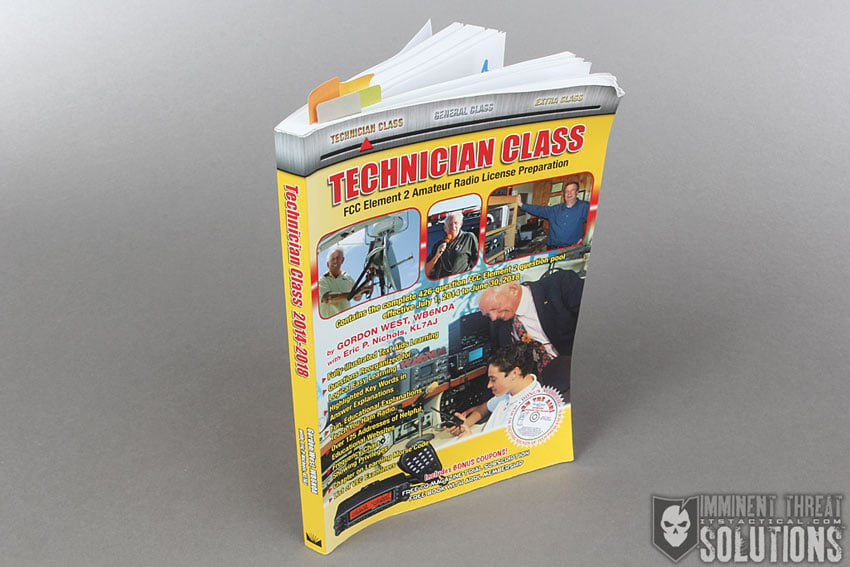The Ultimate Guide to Learning about Radio Communication and Why You Should
By Bryan Black
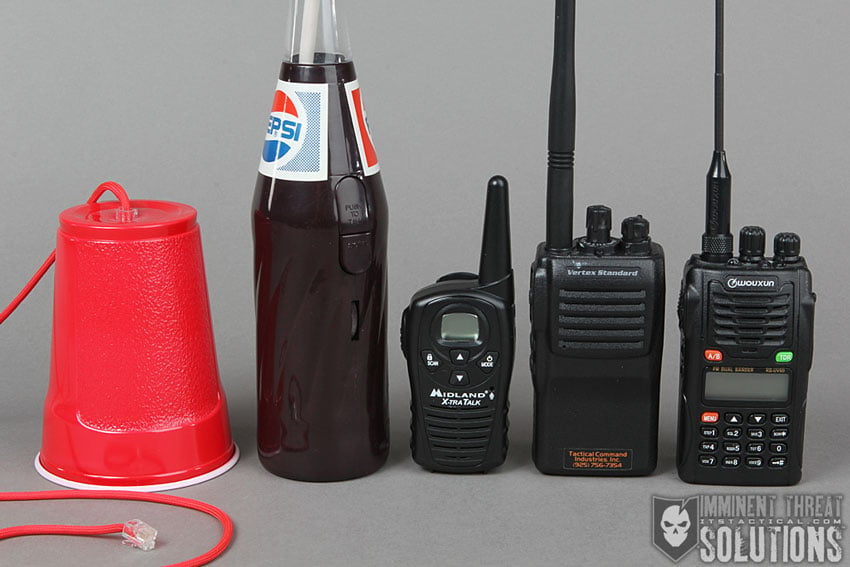
Cell phones have become our primary communication devices because of their versatility, portability and ease of use. However, the problem with relying on them too heavily is that during an emergency, the likelihood of them failing can become a big concern.
If we think about contingencies and recognize the limitations of the devices we rely on so heavily these days, what can we use to fill that gap if the cell networks become overloaded? Enter the venerable radio.
Radio communication is an extensive subject and one that causes a lot of head scratching. I’m not claiming to be an expert, but I have been learning over the years and I’d like to share that experience with you today.
Radio Origin
If you were a kid of the 80s like I was, you probably grew up blabbing to your friends over a walkie-talkie. If you were really cool, you had one that was disguised as a Pepsi bottle too. If you’re stewing at how young I am, I promise I had a string phone too.

Walkie-Talkies were rudimentary communication devices that were fairly poor in terms of quality, reception and range. This was due to being limited at 100 milliwatts (0.1 watts) of power and lacking good antennas. Most just had an on/off switch, but some even had the ability to tap out Morse Code. Your buddy who had a different model of walkie-talkie could still hear you through his, as long as you were close enough.
In North America, these Walkie-talkies operated on the 27 MHz citizens band using amplitude modulation (AM). It wasn’t until much later that walkie-talkies appeared using the 49 MHz band with frequency modulation (FM), much like the cordless phones of yesteryear. Before we go any further, I wanted to pass along a great tutorial of how a radio works, if you’re already wondering what modulation is. It’s not going to keep you from learning in this article, but some of you may want to dive in more thoroughly.
With walkie-talkies, you were lucky if you could communicate within line-of-sight down the street, let alone burn through fences. God help you too if your pull-out antenna bent and snapped off when you were in the middle of a critical game of Army.
Power and Frequency
When talking about radios, the first thing that comes to anyone’s mind is range. How far can they transmit? It’s an important detail worthy of a quick discussion before we move on into the different radio services available to you for communication.
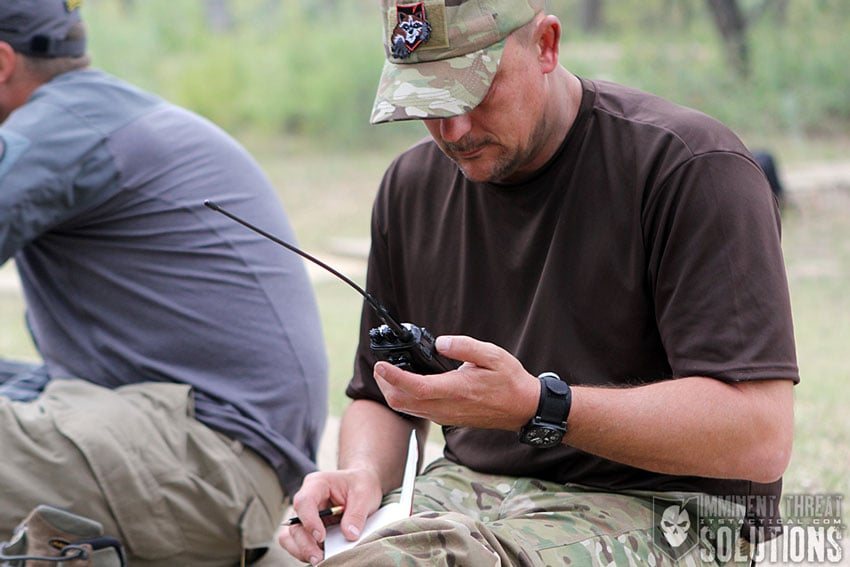
Two key variables when discussing range are power and frequency. Power output is measured in watts and the more watts your radio has the further it can transmit. Think of wattage as one of those wind up cars that you pull back on. The harder you pull back on it, the further it goes once you release it. Watts work like this too, the higher the wattage, the further your signal will travel and the less prone it will be to interruption from resistance along the way. It’s important to note that higher wattage handheld radios will also wear down your batteries faster. This all depends on the quality of radio you’re running too.
Frequency is also a big part of the range you’ll achieve on a radio. The two frequency spectrums we’ll primarily be talking about are VHF (very high frequency) 30 MHz – 300 MHz and UHF (ultra high frequency) 300 MHz – 3 GHz. The frequencies you can operate on within these spectrums vary and we’ll get into that shortly. What’s important here is that neither VHF or UHF is better, per se, each have their differences.
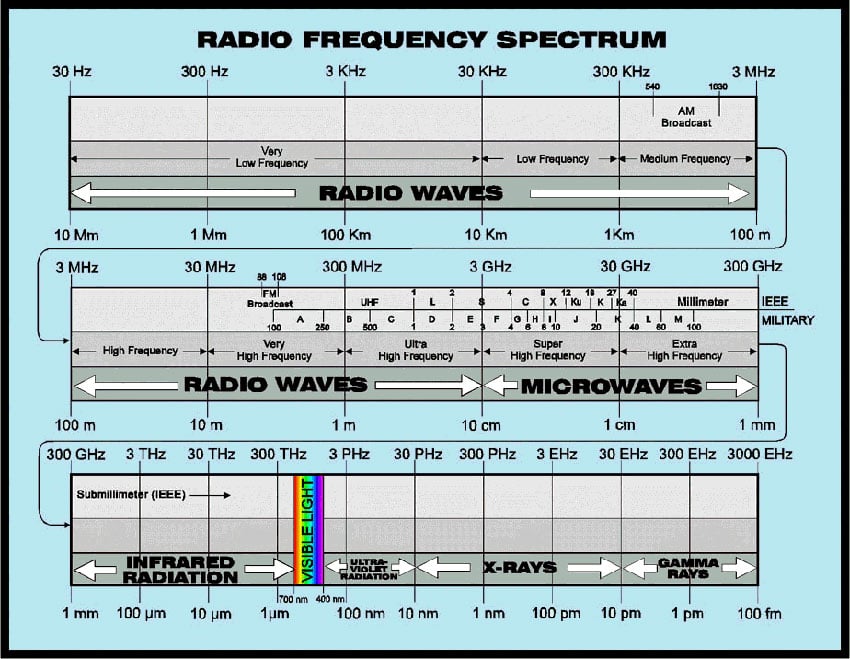
The lower the frequency, (VHF is lower than UHF) the longer the wavelength and typically further a signal can travel. Lower frequencies also have greater penetrating power. Don’t discount UHF though, it may have a shorter wavelength, but that can be beneficial within buildings, where a longer wavelength can hit stopping blocks and a UHF signal can find its way through nooks and crannies.
As a caveat, if you’re faced with a thick, impenetrable concrete wall, VHF is going to win and burn through it better than UHF would. But again, that’s a single wall. UHF is still possibly a better choice for indoor use and VHF might be better for outdoor use. Your mileage may vary though.
Now that we’ve got a few basics out of the way, let’s get into the actual frequencies you’ll have access to operate on.
Family Radio Service
In 1996, the personal radios we’re all used to today were introduced. Family Radio Service (FRS) capable devices are great for simple around town communication, but lack the power (read wattage) to truly be effective at long range communication.
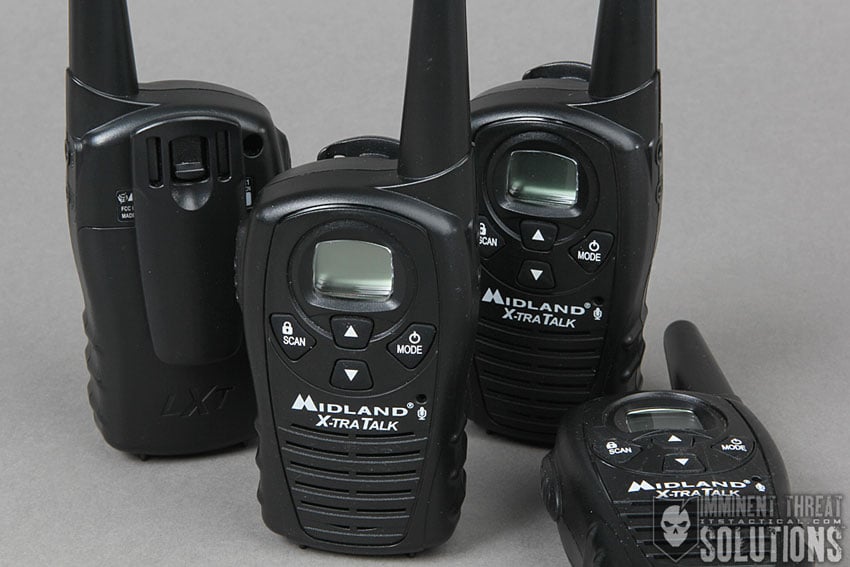
FRS Frequencies
Here are the 14 FRS ultra high frequencies (UHF), which are spaced at 12 kilohertz intervals. These frequencies can be used license-free for personal or business use, as long as you’re not a representative of a foreign government.
- 462.5625
- 462.5875
- 462.6125
- 462.6375
- 462.6625
- 462.6875
- 462.7125
- 467.5625
- 467.5875
- 467.6125
- 467.6375
- 467.6625
- 467.6875
- 467.7125
You may be familiar with the concept of the “perfect conditions” in which most of these FRS radio companies use to tout their crazy ranges of up to 40 miles. The fact of the matter remains that the FCC regulates that FRS radios have an integral non-detachable antenna and operate with a maximum power of 1/2 of a watt. That’s 0.5 watts or 500 milliwatts. Only 5 times more power than that 80s walkie-talkie was putting out. Even the FCC states that typical range of FRS is less than a mile.
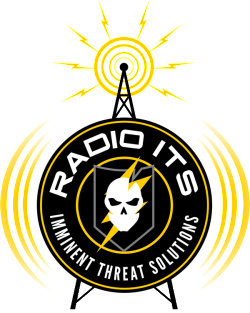
So how can companies back up their long range claims? I’d love to actually see their testing, but with a clear line of sight, the UHF range is still going to be limited to the horizon. AM radio (550 kHz – 1650 kHz) and shorter wavelengths in the sub 2 MHz range follow the earth’s curvature due to reflection off of the atmosphere and thus travel pretty far. As wavelengths get shorter with VHF and then even shorter with UHF, they generally travel in straight lines.
This is what the horizon limitation is all about with FRS. It’s possible companies achieve a huge range by elevating an antenna. Once a transmission on FRS reaches the horizon, or point at which the earth starts to curve, it will continue indefinitely in a “generally” straight line. If the antenna on the other side of that earth curvature is elevated, it’s possible to game the distance the antenna can pick up the “straight line” communication. It’s a theory, but it’s what I’m going with for now.
One last thing to mention on FRS radios is the option of setting privacy codes. There’s a whole lot of terminology here, so try not to get overwhelmed. These “codes” are known as PL Tones (Motorola trademark) and generically referred to as CTCSS (Continuous Tone Coded Squelch System) codes. They’re analog and are often numbered 1-38. Additionally, there’s a digital block of these codes known as DPL (Digital Private Line – another Motorola trademark) and generically referred to as CDCSS (Continuous Digital Coded Squelch System) codes. These are typically numbered 39-121.
These codes are primarily for interference elimination in the case where all of the 14 FRS channels are occupied within your area. For instance, you hear chatter on all 14 FRS frequencies and rather than give up, you punch in a privacy code of 19 with your radio set to channel 1 (462.5625). Now you and the other party you’re communicating with can talk without hearing the main conversation on channel 1. Of course, if another radio in the area also has the privacy code of 19 set on channel 1, they’ll hear everything you’re saying.
General Mobile Radio Service
GMRS (General Mobile Radio Service) dates back to the 1940s when the FCC established the service for “individuals and entities that were not eligible to hold ‘land mobile’ licenses in public safety or industrial and land transportation services.” Basically, it was originally available for private citizens and business, but in 1988 the FCC limited eligibility to private citizens (individuals) only.
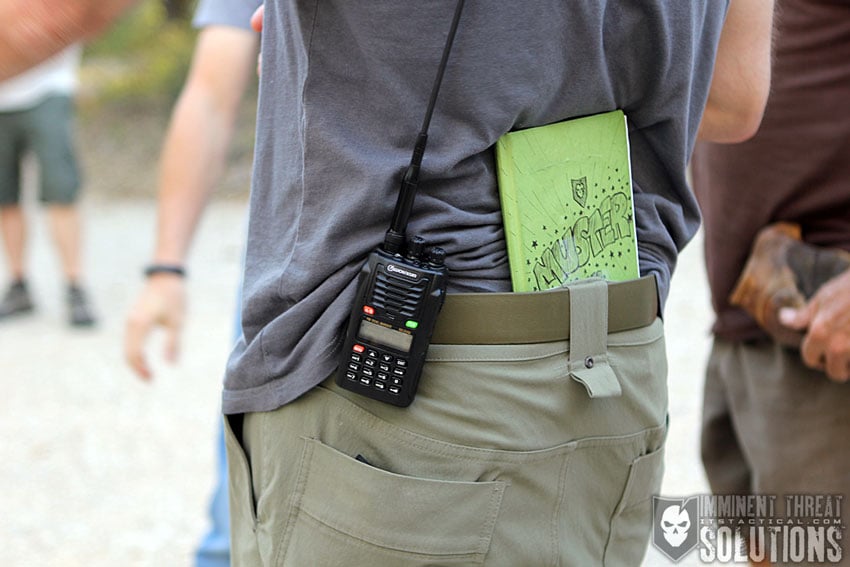
GMRS frequencies require an FCC license to operate on (don’t worry, there’s no test – more on this later). Recently the FCC has started to allow companies to manufacture dual-service devices, which are FRS and GMRS capable radios. The FCC still states, however, that to actually use these extra GMRS channels on the dual-service device, you still need to have a license. For instance, the burden is on the user to ensure they’re not violating the FCC rules. What’s even more confusing is that some companies sell FRS/GMRS radios with channels 1-7 operating at more than the maximum 0.5 watt power, which means you have to know this and if you don’t have a GMRS license, limit yourself to FRS channels 8-14.
It’s very confusing to me why the FCC would let this happen if they’re so worried about licensing GMRS and how easy it is to mistakenly use a dual-service device improperly. I think they’re giving the average consumer too much credit to know the laws surrounding a dual-service device they may have just purchased, but I digress.
To bring you up to speed on why companies would be selling these FRS/GMRS radios with channels 1-7 operating at more than 0.5 watts, let’s get more into just what GMRS is all about.
GMRS Frequencies
Here are the 23 UHF (Ultra High Frequency) GMRS channels which are spaced at 25 kHz intervals. A license is required to operate on GMRS and the licensing process is explained below.
- 462.5500
- 462.5625
- 462.5750
- 462.5875
- 462.6000
- 462.6125
- 462.6250
- 462.6375
- 462.6500
- 462.6625
- 462.6750
- 462.6875
- 462.7000
- 462.7125
- 462.7250
- 467.5500
- 467.5750
- 467.6000
- 467.6250
- 467.6500
- 467.6750
- 467.7000
- 467.7250
As mentioned earlier, there are 7 frequencies above that are shared frequencies with FRS. The only difference between these frequencies on GMRS is that by having a GMRS license, you can now transmit on these 7 with a max output of 5 watts vs. the 0.5 watt limit on FRS. Hopefully you’re tracking.
Other than those 7 channels with the max 5 watt output on GMRS, the other 16 channels have a max output of 50 watts! Most handheld GMRS capable radios only have 1-5 watts of available power though.
Licensing
The downside to GMRS is the licensing required, but I was surprised at just how easy it was to do. It took me all of 10 minutes to do and cost me $90. It’s a 5-year license that’s available to anyone 18 years or older and not a representative of a foreign government. The plus side is that once you get a license, any family member, regardless of age, can operate GMRS stations and units within your licensed system.
In 2010 a proposal was introduced to eliminate the licensing requirement to operate on GMRS frequencies, but as of this date that proposal is still pending. To get your GMRS license simply head to the FCC Universal License System (ULS) website and register. Once you’re setup with an account, just click on the option to “apply for a new license.” Next, select “ZA – General Mobile Radio (GMRS)” and follow the instructions.
Multi User Radio Service
MURS (Multi User Radio Service) was introduced in its current form back in 2002, when the FCC changed the service rules for its 5 VHF frequencies. MURS is unlicensed and its frequencies can be used by any businesses or any person, regardless of age, provided they’re not a representative of a foreign government.
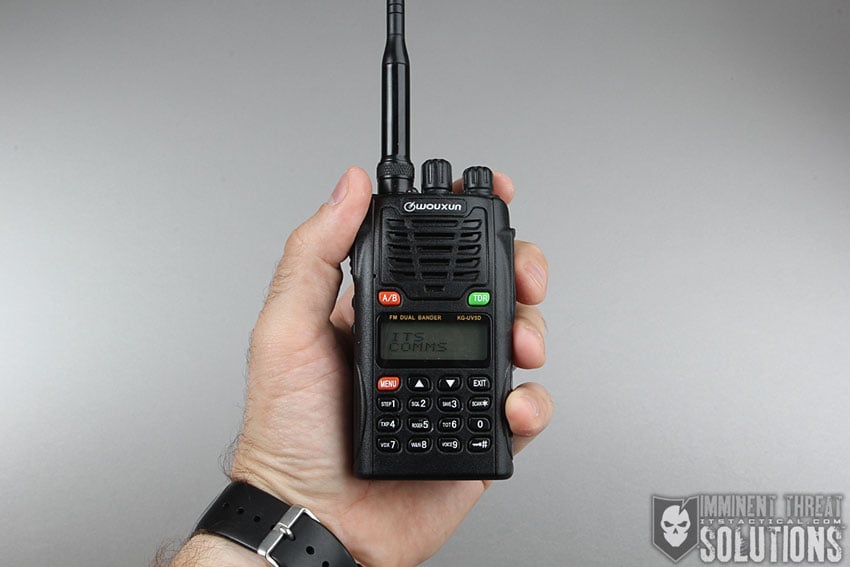
Every frequency we’ve discussed up to this point (FRS and GMRS) has been UHF. MURS is a tremendous resource that provides 5 VHF frequencies with a max power output of 2 watts. That’s four times the power of FRS radios. We’ve been running MURS on our ITS radios and can’t say enough good things about the radio service. We ran radios using MURS during this year’s ITS Muster and Skill-Set Development Excursion. Each squad was assigned a radio to communicate with and they worked extremely well for this purpose.
MURS Frequencies
Here are the 5 MURS frequencies which are spaced at 11.25 kHz or 20.00 kHz intervals.
- 151.820 MHz (11.25 kHz)
- 151.880 MHz (11.25 kHz)
- 151.940 MHz (11.25 kHz)
- 154.570 MHz (20.00 kHz)
- 154.600 MHz (20.00 kHz)
A few other benefits of operating on MURS frequencies are the ability to have detachable antennas and use an external antenna of up to 20 ft. (6.1 meters) above a structure, or 60 ft. (18.3 meters) above the ground, whichever is higher. MURS can’t be used with repeaters though. You’ll also find the ability to set privacy codes on MURS frequencies like I described earlier with FRS radios.
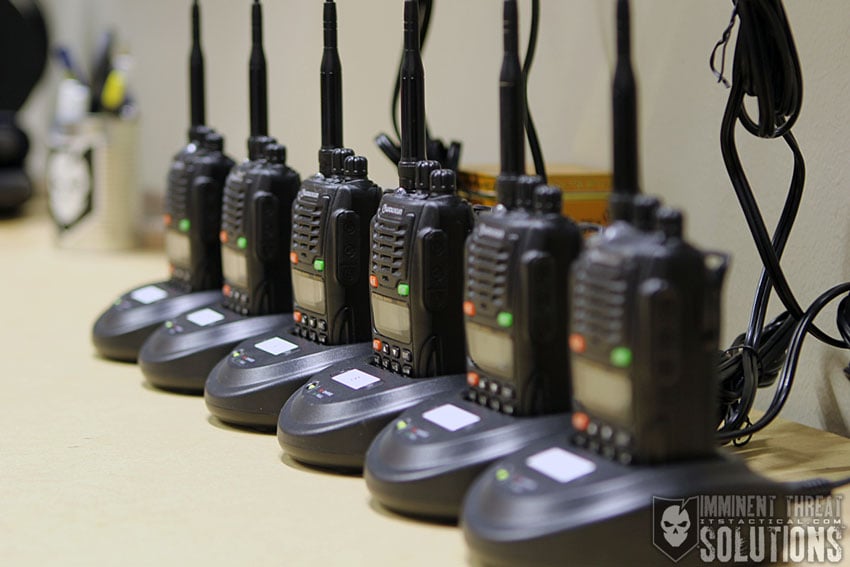
Citizens Band
CB Radio (Citizens Band) dates back to its establishment in the 1940s by the FCC, but it wasn’t until 1983 that the license requirement was lifted. A business or a person of any age is eligible to operate a CB, provided you aren’t a representative of a foreign government.
A CB radio is an awesome tool to have at your disposal for vehicle-to-vehicle communication and even emergency purposes. The 27 MHz frequencies used by CB are relatively poor indoors and discourage the use of handheld radios. Many CB radios also have weather frequencies built in to receive NOAA National Weather Service alerts. More on Weather frequencies in the next section.
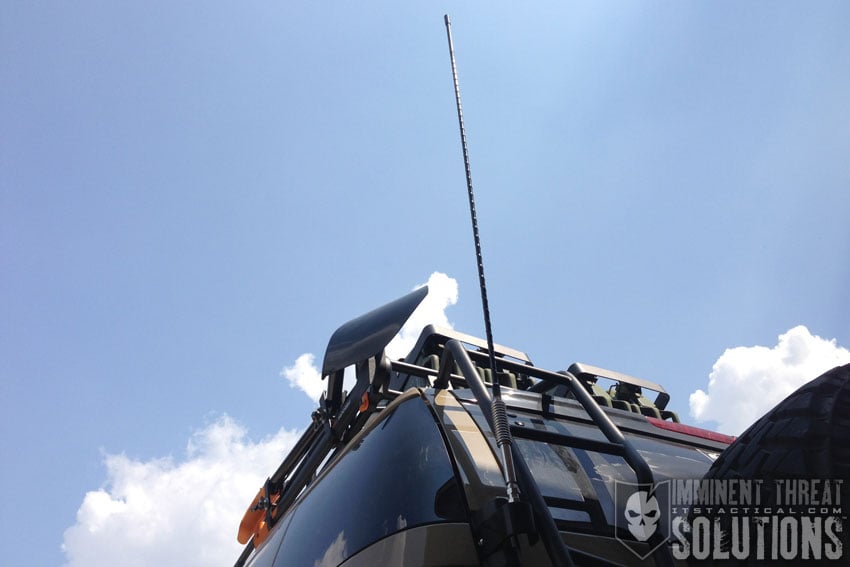
CB Frequencies
Here are the 40 HF (High Frequency) 27 MHz CB Frequencies authorized for use with a maximum 4 watt output (AM) or 12 watt output in Single Side Band (SSB) as measured at the antenna connector on the back of the radio.
- 26.965
- 26.975
- 26.985
- 27.005
- 27.015
- 27.025
- 27.035
- 27.055
- 27.065 *Emergency Use Only*
- 27.075
- 27.085
- 27.105
- 27.115
- 27.125
- 27.135
- 27.155
- 27.165
- 27.175
- 27.185
- 27.205
- 27.215
- 27.225
- 27.255
- 27.235
- 27.245
- 27.265
- 27.275
- 27.285
- 27.295
- 27.305
- 27.315
- 27.325
- 27.335
- 27.345
- 27.355
- 27.365
- 27.375
- 27.385
- 27.395
- 27.405
When talking on a CB radio, you can’t talk with another station for more than 5 minutes continuously before waiting at least one minute before starting another communication. Channel 9 is restricted by the FCC as an emergency communication and roadside assistance channel only. The typical conversation channel on CB is 19, where you’ll often find truckers and highway travelers providing information on traffic, construction and accidents. It can be a great way to find out what’s going on ahead of you on the highway when traveling.
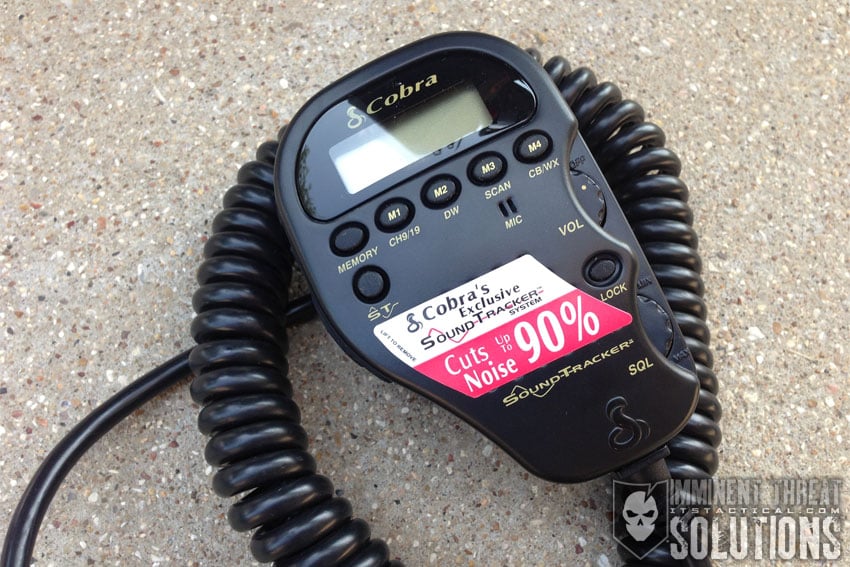
Single Side Band
SSB is a refinement of amplitude modulation (AM), which uses transmitter power and bandwidth more efficiently. Channels 36–40 are designated for SSB use, with channel 36 being the unofficial calling channel for making contact and channels 37-40 being used for continued conversation. AM only CB radios are asked to not use channels 36 through 40 and SSB stations are requested to stay off the remaining 35 channels. This theoretically provides interference-free operation by separating the more powerful SSB stations from the AM stations.
Here are a few additional things to keep in mind when using a CB radio:
- You may not raise the power output of a CB device.
- You may not attach a “linear,” “linear amplifier” or any other type of power amplifier to your CB device.
- There are no height restrictions for antennas mounted on vehicles or for hand-held devices.
- For structures, the highest point of your antenna must not be more than 20 feet above the highest point of the building or tree on which it is mounted, or 60 feet above the ground.
- There are lower height limits if your antenna structure is located within two miles of an airport: If your antenna is more than 20 feet above the ground, the highest point of the antenna must not exceed 1 meter above the airport elevation for every 100 meters of distance from the nearest point of the nearest airport runway.
- You can use an on-the-air pseudonym (“handle”) of your choosing. “Rubber ducky, this is Large Marge, come on back.”
Weather Frequencies
NOAA Weather Radio All Hazards (NWR) is a nationwide network of radio stations broadcasting continuous weather information directly from the nearest National Weather Service office. NWR broadcasts official Weather Service warnings, watches, forecasts and other hazard information 24 hours a day, 7 days a week.

These Weather frequencies below are a great way to stay informed of weather that may be moving in or even to just check the temperature outside. If you’ve ever tuned into these weather frequencies, it’s hard not to get sucked in and feel like you’re in the middle of an important brief. The automated voice broadcasting the weather information is eerily creepy too.
NWR Frequencies
Here are the 7 VHF weather frequencies that NOAA broadcasts on. Use this link to find out what station you’ll need to tune into locally.
- 162.400
- 162.425
- 162.450
- 162.475
- 162.500
- 162.525
- 162.550
In addition to the weather, you’ll also hear hazard warning broadcasts and post-event information. This includes natural disaster (earthquakes or avalanches), environmental issues (chemical releases or oil spills) and public safety messages (AMBER alerts or 911 Telephone outages).
These weather frequencies use 1,025 transmitters that cover all 50 states, adjacent coastal waters, Puerto Rico, the US Virgin Islands and the US Pacific Territories. This makes them readily accessible in US territorial waters and you’ll likely find them on most marine VHF radios.
Amateur Radio
In my opinion, the ultimate in radio communication is Amateur Radio, also known as Ham Radio. Ham isn’t an acronym, but an old-school term originally thought to have been derived from radio operators with poor or “ham-fisted” skills. It consists of a series of radio frequency bands designated internationally for public, non-commercial use. Various types of information can be transmitted over the bands, such as voice, video and digital data.
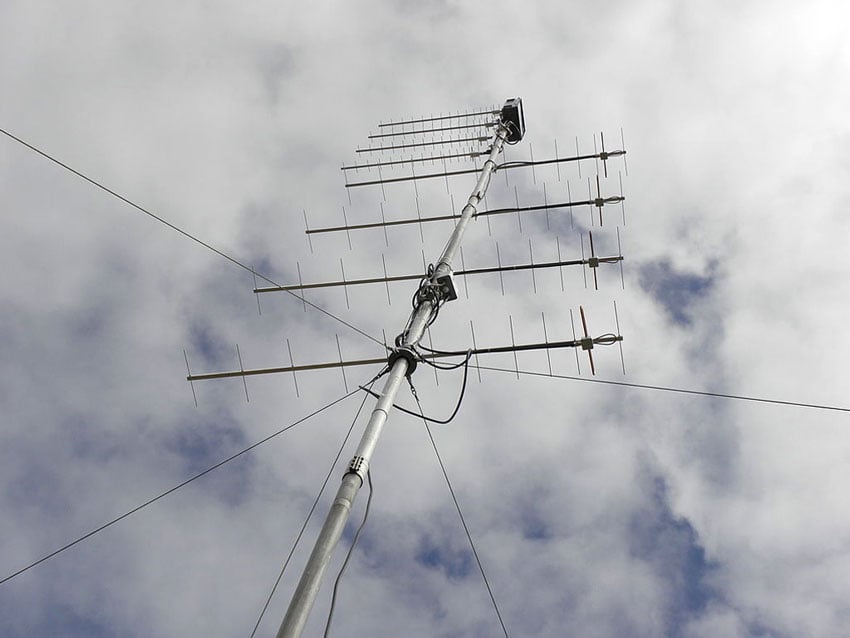
Amateur Radio is a doorway to the world, which can be used to communicate with people both local and distant. Even off-planet communications are possible, as the astronauts in the International Space Station (ISS) maintain an Amateur Radio Station!
The real power of Amateur Radio is the ability to communicate over great distances during an emergency and gain important intel on what’s actually going on. There are a multitude of volunteers that broadcast important information via the airwaves as a public service during disasters. After 9/11 Ham Radio Operators played an important role in emergency communications. It’s prohibited to use Ham for commercial purposes and the only time you can receive compensation for operating a station is if you’re a teacher and you’re demonstrating Amateur Radio for students.
Licensing
An FCC license is required to transmit on the amateur bands and there are three different license classes, each of which award the operator with a variety of privileges across the radio frequency spectrum.
On February 23, 2007, the FCC eliminated Morse code testing. The Morse code requirement was a major stumbling block for many interested in amateur radio. While no longer required for licensing, Morse code (or CW – continuous wave) remains an interesting and effective mode of communication by many amateur radio operators.
New amateur radio operators typically enter the hobby by obtaining a Technician Class license, which is easily obtainable by answering at least 26 questions correctly from a 35 question written examination. Later advancements and the ability to operate on more Amateur Radio frequencies are made possible by obtaining the General Class or Extra Class License.
Ham Frequencies
The privileges of a Technician Class Operator License include operating an amateur station that may transmit on channels in any of 17 frequency bands above 50 MHz with up to 1,500 watts of power. Click here for a comprehensive overview of the Amateur Radio frequency allocations.
How to Be a Ham
Obtaining your Technician Class Operator License is simple. All there is to it, is studying the proper question pool for the exam and finding a local testing location near you. Here’s how to take care of those two requirements quickly.
First, head to Amazon and purchase the book Technician Class by Gordon West. It’s a phenomenal resource and in addition to teaching you all about Amateur Radio, it has the question pool I mentioned above with all the right answers. Don’t think of it as a cheat guide though, it’s a study guide, pure and simple.
Next, study! Go through the book absorbing the information and working through the question pool and corresponding answers. There’s 426 of them (there aren’t any secret questions on the exam), but don’t let that intimidate you. There’s only 35 of them on the test, remember? You only need to answer 26 of them right, which is 74% of the questions. West estimates that it will take you about 30 days to go through the questions a few times for the information to stick.
Finally, head to the W5YI-VEC website and search your state for a local exam location. Find one near you and inquire about when the next test will occur. Simple!
I’m actually in the process of studying for my Technician Class License, finally. I’ve known about how easy the process was for so long that I found myself putting it off. No longer though, one of my motivations for writing this article was to hold myself accountable to get my ass in gear!
What’s Next?
Now you have the hard decision of figuring out which of these radio frequencies you want to use. There’s no right answer though, they all have their strengths and weaknesses. Each usage will depend on your situation and what you want to achieve with your communication.
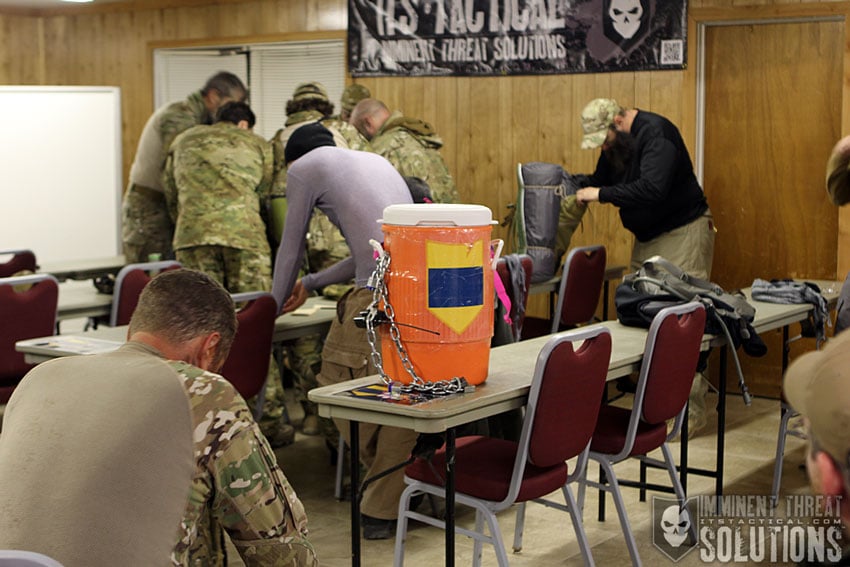
While this article was a primer to what’s available to you, I’ve got another article that will run shortly on recommended radios, how to program them, customize them and last but not least, how to dummy cord your radio. The guys from this year’s Muster know exactly what I’m talking about, especially Delta Squad.
Stay tuned for more and please add your experience with these different radio frequencies in the comments below. I’d love to hear about what’s working for you.

Did you get more than 14¢ of value today?
If so, we’d love to have you as a Crew Leader by joining our annual membership! Click the Learn More button below for details.
Thanks to the generosity of our supporting members and occasionally earning money from qualifying purchases as an Amazon Associate, (when you click our Amazon links) we’ve eliminated annoying ads and content.
At ITS, our goal is to foster a community dedicated to learning methods, ideas and knowledge that could save your life.
